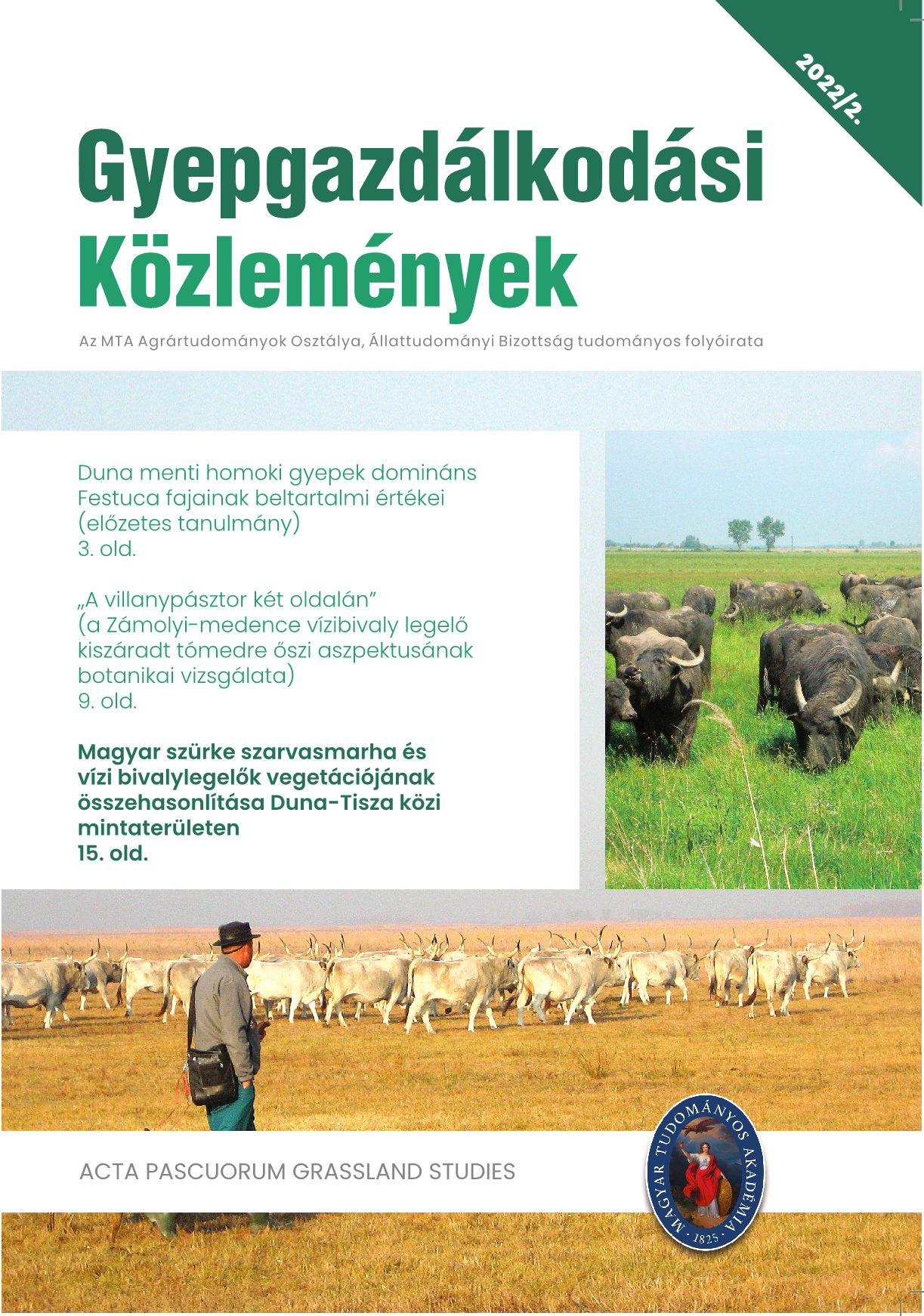Pannon homoki legelők vizsgálata az Ipoly mentén
Szerzők
Megtekintés
Kulcsszavak
Licenc
Copyright (c) 2023 Gyepgazdálkodási Közlemények

This work is licensed under a Creative Commons Attribution-NonCommercial-NoDerivatives 4.0 International License.
Hogyan hivatkozzuk
Absztrakt
The results of global climate change can be observed in climate of Hungary. In the last couple of decades significant have been observed extremes in the climate of Europe due to global climate change (IPCC, 2014), which the irregular alternation of droughts and floods could be traced in the Carpathian Basin (Bartholy et al., 2009, 2014). The river floodplains and adjacent wetlands were outstanding from a nature conservation point of view due to the increasingly exposed to this change (Capon et al., 2013). Because of climatic effects, floodplain areas are even more exposed to the spread of invasive species (Szollát and Schmotzer, 2004; Schmotzer, 2008; Füri 2000; Füri and Kelemen 1997; Čížková-Končalová et al. 2013), and changes in land use also aggravate this problem (Mosner, 2015; Penksza et al., 2012). The aim of this study is to present the impact of extreme climatic situations on vegetation in grazed grasslands. The question was, which Festuca species occurs in addition to this? Can Festuca javorkae or Festuca pseudovina be found. The Festuca javorkae, which was related to Festuca rupicola, could also be problematic, although this species was clarified (Penksza, 2000, 2009a; Penksza et al., 2020, 2021; Markgraf-Dannenberg, 1980) and its species differentiation was shown using molecular studies by Bnauer et al. (2003) and Galli et al. (2006). According to the description of association Salvio nemorosae-Festucetum rupicolae, Festuca rupicola is one of the species of the association that appeared in the present study.

 https://doi.org/10.55725/gygk/2022/20/2/11359
https://doi.org/10.55725/gygk/2022/20/2/11359